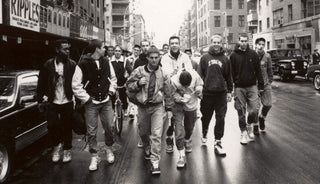As enjoyable as it is to debate the origin of things, especially those that are largely undocumented, let’s set a baseline that Youth of Today were a pioneering band. No, they weren’t responsible for altering the sound of hardcore punk, but they did rewire its DNA. Call it reconnecting the dots or being disruptors, but founding members Ray Cappo and John Porcelly incubated an idea from their respective ‘burbs and brought it to worldwide fruition. As much as they drew from traditions in hardcore punk, they birthed a new aesthetic that immediately infected audiences and sometimes divisively made them take sides.
“We were a band by design, not by default,” Porcelly explains. “When Ray and I started Youth of Today, we had a very defined idea of what we wanted to do with the band. Here was our mission statement: 1. Resurrect hardcore from the lame ass rock/metal direction it was heading in. 2. Bring back straight edge, in a new way, where the whole band walked the talk and believed in it wholeheartedly. We wanted to prove that it’s not just a passing fad but a legitimate alternative to a self-destructive drug culture. 3. Take the positivity and hopefulness of bands like 7 Seconds and Youth Brigade and meld it together with the fury and hardness of Negative Approach and Agnostic Front. 4. Be so moved by the music and the message that when we play, we fucking give everything we have, every night, and leave blood, sweat, and tears on the stage. And later on, we put in an addendum: 5. Start a vegetarian revolution amongst the youth and spread awareness of the exploitive and cruel nature of meat-eating and factory farming.”
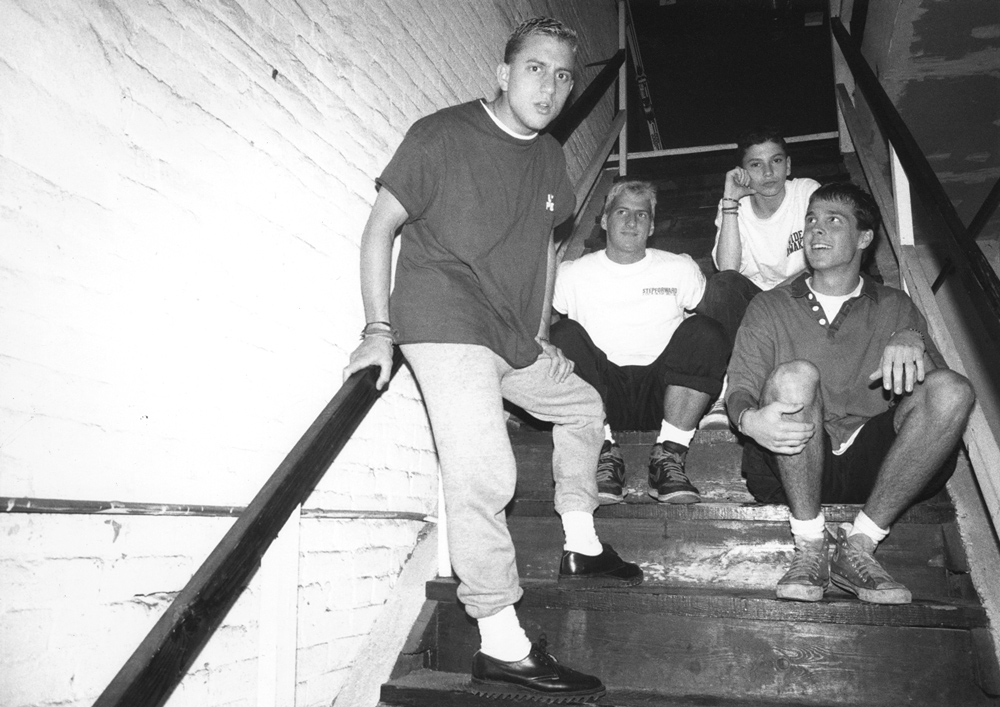
One of the most powerful statements you can make in a subculture is challenging its conventions. That very ideal is what makes Minor Threat’s song “Straight Edge” resonate to this day, as it’s not so much an ideology, but a rejection of one. Just a few years after the D.C. band called it quits, Youth of Today coalesce, bringing a new wind to hardcore. Unabashedly a band that identified with straight edge, what made them such a flashpoint for hardcore was their energy, ideals, and image. In just a few short years, they somewhat inadvertently branded the idea of straight edge, largely in part by being a focused band that was as exciting visually as they were tonally. Like the Kiss Army or Misfits Fiend Club or the Boston Crew that they were so inspired by, they had their own sect that drove a sense of belonging: The Youth Crew.
“In the beginning, the Youth Crew was Youth of Today and our small circle of friends, namely the kids from Crippled Youth, Dave Stein, and Steve Reddy from Albany, Rat Boy, Dave Run It, Herbie Straight Edge, this kid Travis from my high school, and a few CT skater kids,” Porcelly explained to me last year in a piece for Green Room Radio. “There were only a handful of us, because we were literally the only straight edge kids in the Tri-State area at the time. So, it was us against the world, and I think straight edge kids—who will forever be the minority—still feel like that even today.
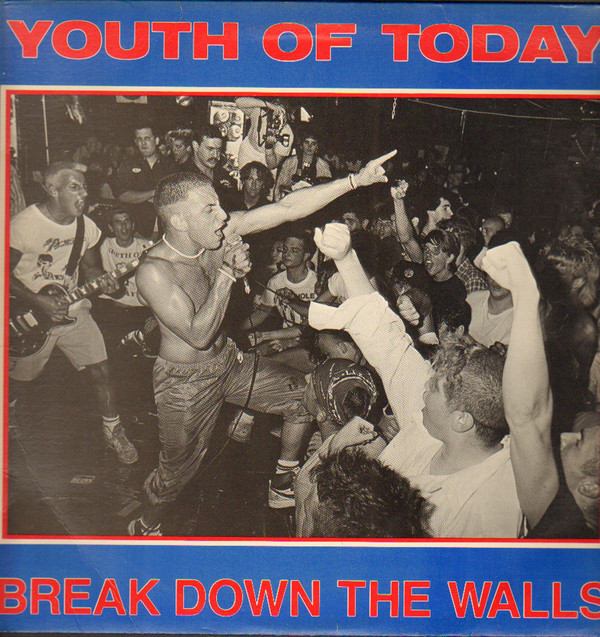
Youth of Today – Break Down the Walls (Wishingwell Records 1986)
Aesthetically speaking, Youth of Today provoked the status quo of punk by not looking punk at all. What that did was almost get rid of the barrier to entry of punk rock in the ‘80s. Instead of emulating New York or British punks, they channeled who they were—punks who skated, abstained from drugs and alcohol, and were... yes... jocks. Let’s spell this out: it wasn’t common for a hardcore punk band in 1985 to wear windpants or a varsity jacket or high top Nikes or have a bleached blonde crew cut, yet alone run those all at once along with boasting a chiseled physique. When you picked up at copy of Break Down the Walls, it was hard not to notice that the band’s nucleus of Ray Cappo and John Porcelly weren’t disciples of Sid Vicious or Johnny Thunders.
“We were a band by design, not by default.”
“He (Porcelly) would cut the bottoms of all his T-shirts off, so they’d roll up, sometimes the sleeves,” says drummer Sam Siegler who joined the band in 1987. “That, coupled with a Lou Ferrigno-like physique made him look like a hardcore super hero of sorts. Ray Cappo has a knack for making anything look good, he would roll down to CBs in black shiny skin tight bicycle shorts and it somehow worked.”
I mean, fuck, no one in punk was wearing Champion hooded sweatshirts either. Contextually, you’d be hard-pressed to really find 10 kids in any major city in 1985 running this look with the specificity and nuance of people associated with the Youth Crew, and by 1987, it even expanded to wearing the X-Rated Swatch, to further the message.
“Spiking up a mohawk everyday and clipping on all those safety pins and spiked bracelets just seemed like way too much work,” says John Porcelly. “And in a way, it was kind of ‘unpunk’ to be just as concerned with anti-fashion as the preppie kids in my school were with their grooming and moussing. The Youth of Today ‘look’ just came naturally from what we wore every day and felt comfortable in. Plus, it was way easier to mosh in shorts and sneakers, and that was something our teenage lives literally revolved around. But honestly, our look wasn’t really ripped from those Boston bands. We copped a few things here and there, but where they were more inner city and almost thuggish with the trench coats and sleeve hats, we were more suburban, jockish, and clean cut. It’s just who we were.”
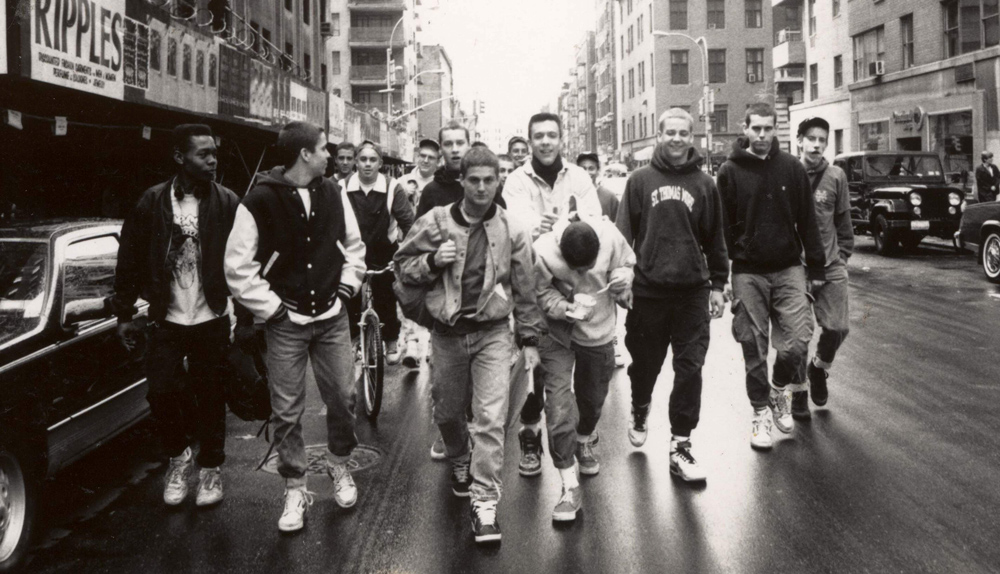
What Porcelly does admit was that SS Decontrol, D.Y.S., and the Boston Crew made an indelible mark on him as a teenager, specifically for their live reputation. The few images that existed at the time made it impossible to know how many people were in the crowd, and at times, which side was up. The bands, specifically SS Decontrol looked like Vikings smashing their oars against waves of onlookers, swept up in the sweaty storm. Though their frontman Springa wasn’t physically imposing, his wiry frame and erratic gestures played well off guitarist Al Barile’s hulking silhouette.
“The Youth Crew look became a stance against the violent, nihilistic, drunken mentality that was prevalent in the hardcore scene at the time.”
“They (SSD and DYS) had this image that they were fucking nuts live—that they were so straight edge they would just steamroll over anything in their path,” Porcelly says. “I was too young to see either band, but I would stare at the back of Get It Away and imagine that Al must’ve ninja kicked that dude in the head for daring to wear a Who shirt to a hardcore show. Don’t get me wrong, I loved Minor Threat to death, but you just didn’t see pictures of Lyle Preslar flying through the air like Superman holding his guitar one-handed. That imagery gave their message such power.”
SSD circa 1982.
Riding their ethos and a bit of youthful naivete, Cappo and Porcelly set their sights on the least straight edge place on their Planet Earth in the ‘80s: New York City. Less than a decade prior, New York and a small stretch of the Bowery helped birth whatever the fuck the Brits stole and repurposed as punk rock, leaving us with plenty of oral histories, LPs, 45s, controversy, tragic deaths, tales of triumph, and yes, a trillion CBGB T-shirts, mugs, boxer shorts, and ephemera that have nothing to do with “country bluegrass and blues.”
OK, now pause and conjure up all the clichés about dangerous pre-Giuliani New York, poverty, blown out buildings on barren blocks, jack shacks and peepshows, hookers and hellions. It’s all true, so fine. Now visualize these two wide eyed, sober Italian-American teens arriving, intent to make an impression on the local scene and not only pulling it off, but changing hardcore globally. For me and many, that’s a fuck of a lot more impressive than some aspiring actor getting a big break and going on to some unwatchable movie franchise—but hey, I also don’t rarely watch movies or care about celebrity.
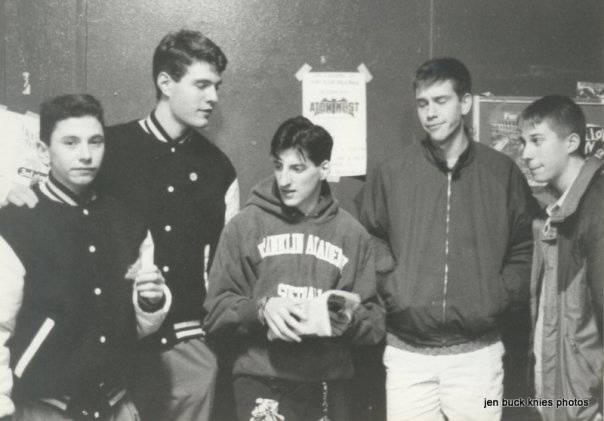
“In a way, it was punk as fuck to walk into CBGB’s wearing a varsity jacket back then,” Porcelly recalls. “I’d get double takes and stare downs for it from the leather and chains crowd. It somehow aggravated them. Whatever, I was on the football team in high school and I wore my jacket around. It was also radical as hell to put X’s on your hands and go to shows where everyone is fucked up on serious hard drugs. I really think that one of the reasons we didn’t get in more fights was because we were friends with Roger and Vinnie from Agnostic Front, and they welcomed us into the scene when we moved to NYC; so with their stamp of approval, people accepted us. Ironically, to the punk crowd we dressed too normal, but to the so-called normal kids in my high school, I was a freak. It’s hard to imagine nowadays, but back then, no dudes had bleached hair. No one would even think of wearing camo shorts. No one even rode a skateboard! These things that are so mainstream now were considered completely weird back in the day.”
It would be revisionist to say that straight edge ousted the Blank Generation and that every punk band suddenly X’ed up, but a scene within a scene was flourishing and adding a new flavor to the mix. While some of New York hardcore’s most infamous and influential bands rarely trekked out of the Tri-State area, let alone the Five Boroughs, Youth of Today actively toured the US and, along with Verbal Assault, and Fugazi, were part of a short list of HC-rooted acts that routinely ventured to Europe.
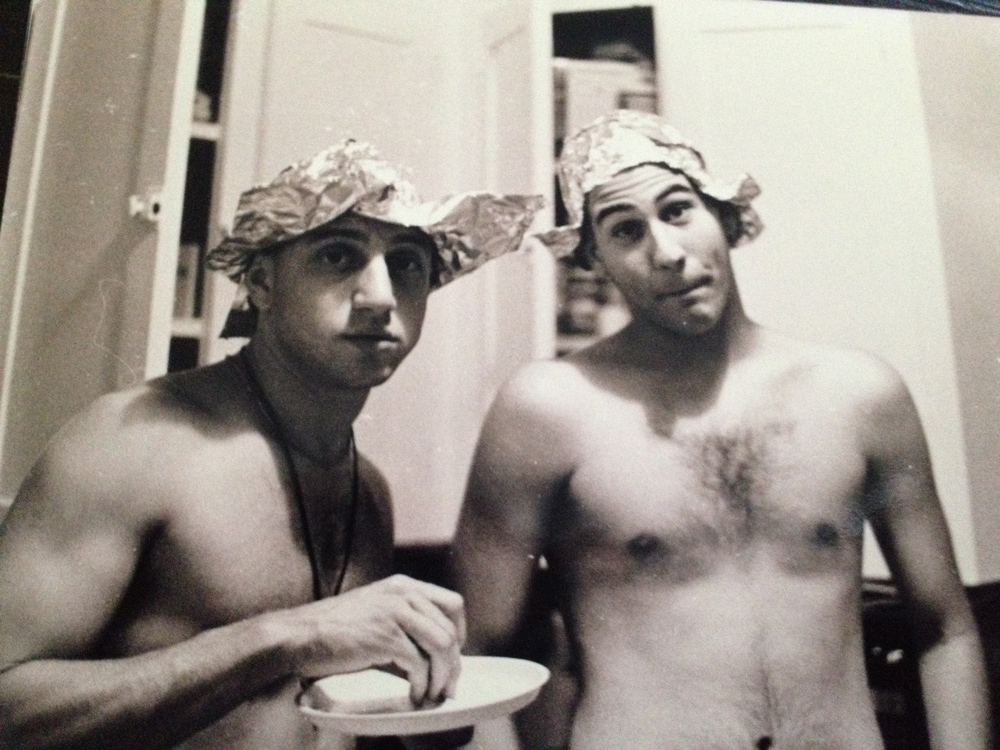
Cappo’s label Revelation Records, which he started with friend Jordan Cooper in 1987, was becoming New York’s most talked about label, despite being based in Connecticut. Revelation’s appeal was that it was documenting a scene’s evolution, specifically through a 7″ compilation (New York City Hardcore 1987 – Together) and a year later, an expanded 12″ (New York City Hardcore – The Way It Is) that not only defined this new era, but exposed a larger audience to it. What proved to be so important about “scene” compilations is that they informed you of a chunk of something for a cheap price. For an adolescent budget, it was an economical way to grow your quiver of knowledge, without blowing your record money on one band. Meanwhile, the crowds outside the Lower East Side clubs grew, with CBGB specifically becoming the magnet school for any kid in the North East or below who could hop a train or hitch a ride to a matinee, not only to catch a show, but record shop, hang out, and bring back that spirit and infuse it in their hometown.
“Sneakers were the combat boots of the straight edge army.”
“In a way, the Youth Crew look became a stance against the violent, nihilistic, drunken mentality that was prevalent in the hardcore scene at the time,” Porcelly explains. “The Maximum RnR crowd wanted to label the phenomenon as a bunch of conformist kids who idolized us so much they wanted to dress like us. Maybe some did, but I didn’t see it that way. It was more than a fashion. It was a statement. They just used our clothes to make it.”
How you dressed was an identifier. If you had holes in the sides of your Vans, you weren’t broke, you skated. In a low-key way, the Youth Crew inadvertently brought sneaker culture to punk, at a time when it was barely a thing outside of urban cities. I asked about one image particular that Porcelly had posted on his newly launched clothing company True Till Death’s Instagram account, where a bunch of crew members posed proudly in front of a row of high tops in 1988.

